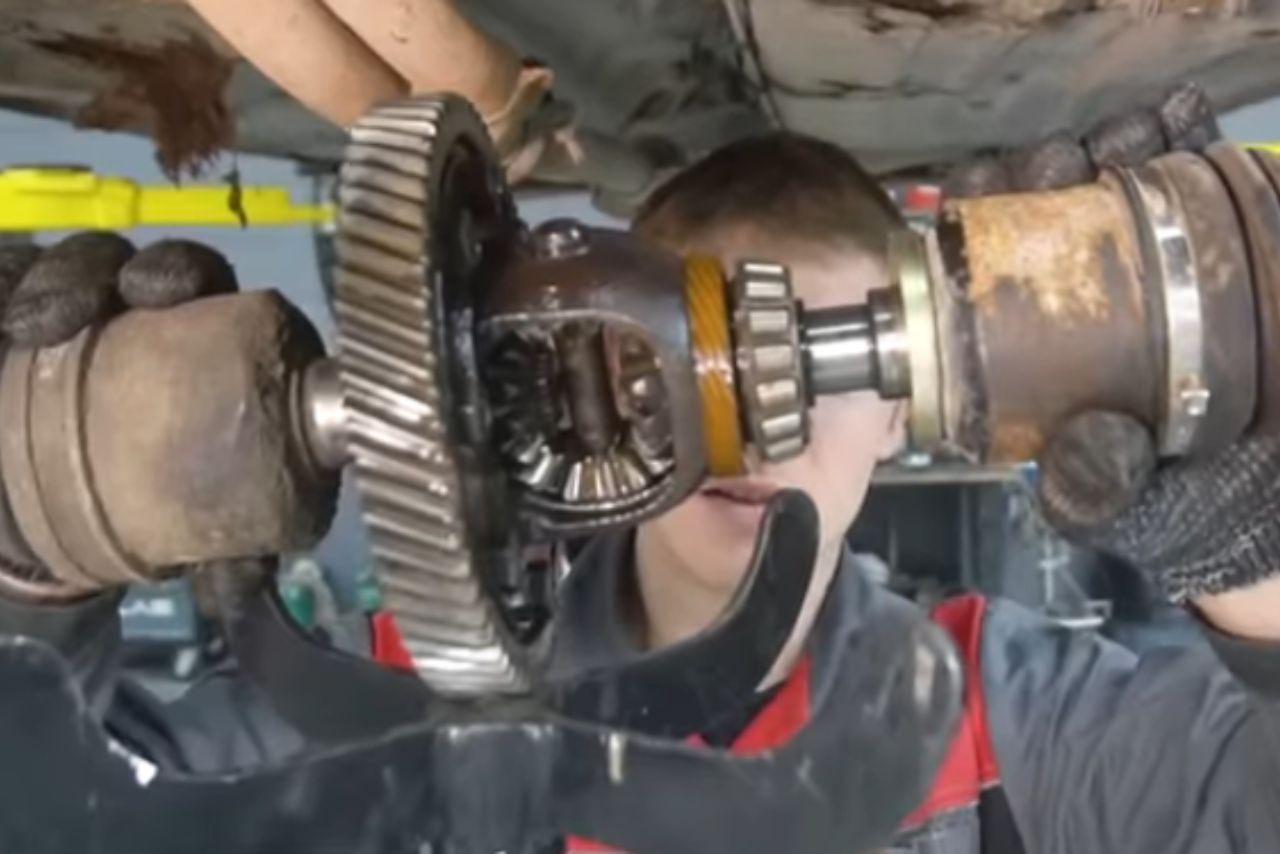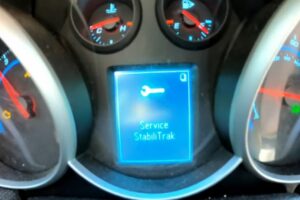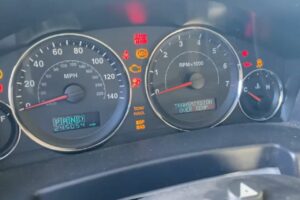Do Fwd Cars Have a Differential?
Yes, front-wheel drive (FWD) cars do have differentials. The differential is an essential component of the drivetrain that allows power to be distributed between the two front wheels. It plays a crucial role in enabling smooth turning and preventing wheel slippage, particularly when navigating corners or uneven road surfaces.
In this article, we will explore what exactly a differential does in an FWD car and how it contributes to the overall performance and handling of these vehicles.
So, let’s dive into the world of differentials in FWD cars and unravel their significance!
Table of contents
Do FWD Cars Have a Differential? What is a differential?

A differential is a crucial component found in most vehicles, including forward (fwd) cars.
It plays a vital role in the drivetrain system by allowing the wheels to rotate at different speeds while transmitting power from the engine to the wheels.
Here are some key points about differentials:
How does a differential work?
A differential is an essential component in the drivetrain of vehicles, including fwd cars. It allows the wheels on an axle to rotate at different speeds while receiving power from the engine.
This section explains how a differential works in simple terms.
Purpose of the Differential:
- The primary purpose of a differential is to distribute torque (rotational force) evenly between the two wheels on an axle.
- It enables smooth turning by allowing each wheel to travel at different distances when taking corners or navigating uneven terrain.
Basic Mechanics:
- A typical differential consists of three main parts: a ring gear, pinion gear, and side gears.
- The ring gear connects to the drive shaft and transfers power from the engine.
- The pinion gear meshes with the ring gear and transmits rotational force to the side gears.
- Side gears connect directly to each wheel through half-shafts or axles.
Differential Action:
- When driving straight ahead, both wheels receive equal power as they rotate at identical speeds.
- During turns, however, outside wheels need to cover more distance than inside wheels due to larger circumferences.
- As a result, one wheel needs to rotate faster than its counterpart for smooth turning and preventing tire scrubbing or binding.
Limited Slip Differential (LSD):
- Some modern vehicles employ limited slip differentials for enhanced performance and traction control.
- LSDs allow slight speed differentiation between left and right sides while limiting excessive slippage that can occur with open differentials.
- Maintenance: Keeping your vehicle’s differential properly maintained ensures optimal operation:
- Regular fluid checks/replacements help prevent overheating and wear
- Periodic inspections for leaks or unusual noises ensure early detection of potential problems
Understanding how a differential works can provide insights into how power is distributed in your vehicle’s drivetrain, enabling better control and smoother handling.
Importance of Differentials in Cars:
Differentials play a crucial role in the performance and functionality of cars, especially when it comes to handling and maneuverability. Here are some key reasons why differentials are important:
Differential Types in Front-Wheel Drive (FWD) Cars:
Front-wheel drive (FWD) cars have a unique setup when it comes to their differentials. Unlike rear-wheel drive (RWD) cars where the differential is located in the rear axle, FWD cars have their differential integrated into the transmission assembly.
Let’s take a closer look at the different types of differentials commonly found in FWD vehicles:
Open Differential:
- The most common type of differential used in FWD cars.
- Allows each front wheel to rotate at different speeds during turns.
- Provides good traction on normal road conditions but may struggle with uneven surfaces or low-traction situations.
Limited Slip Differential (LSD):
- Designed to improve traction and handling by reducing wheel slip.
- Distributes torque more evenly between the front wheels.
- Uses various mechanisms like clutch packs or viscous fluids to limit speed differences between wheels.
Electronic Limited Slip Differential (ELSD):
- A more advanced version of LSD that utilizes electronic sensors and actuators.
- Monitors vehicle dynamics and can quickly adjust torque distribution based on driving conditions.
For example, if one wheel starts losing traction, ELSD can transfer power to the other wheel for better grip.
Torque Vectoring Differential:
- Takes LSD technology further by actively controlling power delivery to individual wheels during cornering.
- Enhances stability and agility by selectively braking certain wheels or redirecting torque as needed.
This helps minimize understeer or oversteer tendencies while improving overall handling characteristics.
It’s worth noting that not all FWD cars come equipped with advanced differential systems like ELSD or torque vectoring diffs.
These features are typically found in higher-end performance models or vehicles designed for enhanced handling capabilities.
Advantages and Disadvantages of Differentials in FWD Cars:
Differentials play a crucial role in the performance and handling of front-wheel drive (FWD) cars. They are responsible for distributing power between the front wheels, allowing smoother turns and improved traction.
However, like any automotive component, differentials also come with their own set of advantages and disadvantages. Let’s take a closer look:
Advantages:
Disadvantages:
1 .Increased Complexity:
Adding a differential system increases complexity within an FWD vehicle’s drivetrain compared to simpler setups found in rear-wheel drive cars or those equipped with open differentials only.
2 .Cost Considerations:
Due to their more intricate design, incorporating limited-slip or electronic-controlled differentials can add additional manufacturing costs when compared with standard open differentials commonly used in FWD cars.
3 .Maintenance Requirements:
Differentials require regular maintenance intervals such as fluid changes and inspections to ensure optimal performance and longevity. Neglecting these maintenance tasks can lead to premature wear, noise, or even failure.
4 .Weight Increase:
The addition of a differential system adds weight to the front end of the vehicle, which can affect overall fuel efficiency and handling characteristics if not properly accounted for during design and engineering stages.
Why is there no differential in a FWD?
In front-wheel-drive (FWD) vehicles, there is indeed a differential, but it is designed differently compared to rear-wheel-drive (RWD) or all-wheel-drive (AWD) vehicles. The primary reason for the difference in design is the layout of the drivetrain.
In a FWD vehicle, the engine and transmission are typically transversely mounted, meaning they are oriented horizontally and parallel to the front axle. This layout allows the power to be delivered directly to the front wheels from the transmission.
In such a configuration, a simple and compact differential known as a “transaxle” is used, combining the functions of a transmission and differential into one unit.
This transaxle incorporates a differential mechanism to allow the front wheels to rotate at different speeds when necessary, such as during turns.
Do FWD cars have differential fluid?
Yes, FWD vehicles, like most other drivetrain configurations, do have a type of fluid in their differentials. In FWD vehicles, the differential is usually housed within the transaxle assembly. The transaxle contains gear sets and bearings that require lubrication and cooling to operate smoothly and efficiently.
Therefore, it is essential to have differential fluid (often referred to as transmission fluid or gear oil) to ensure proper lubrication, cooling, and protection of the internal components.
Regular maintenance of the differential fluid is crucial to ensure the longevity and performance of the transaxle in a FWD vehicle. Manufacturers provide guidelines for the recommended intervals for changing this fluid in the owner’s manual.
Do FWD cars have open differentials?
FWD vehicles can have either open or limited-slip differentials, depending on the specific model and design.
The choice between an open or limited-slip differential depends on the vehicle’s intended use and design objectives. Open differentials are more common in everyday commuter FWD cars, while limited-slip differentials are often found in sportier or higher-performance models.
How does a FWD differential work?
A FWD differential, located within the transaxle, works similarly to other differential types but has a different layout due to the front-wheel-drive configuration. Here’s a simplified explanation of how it operates:
In summary, a FWD differential in a transaxle allows the front wheels to rotate at different speeds while distributing power from the engine to the wheels. The type of differential (open or LSD) can affect the vehicle’s traction and performance in various driving conditions.
Conclusion and final thoughts 💭
(FWD) cars do have a differential. The differential is an essential component of the car’s drivetrain system that allows for smooth turning and maneuverability.
The differential in FWD cars serves the same purpose as in rear-wheel drive (RWD) cars – it enables the wheels on each side of the vehicle to rotate at different speeds while transferring power from the engine to the wheels.
This functionality is crucial during turns when the outer wheel needs to rotate faster than the inner wheel.
Latest Posts:
- Can WD-40 Remove Scratches on Cars? (Hint: Yes, but…)
- Can You Use a Drill to Polish Your Car? (We Tried it Out!)
- Should You Cover Car Scratches With Stickers? (REVEALED!)
- Buick Service Stabilitrak: (Causes & 100% Guaranteed Fix!)
- Common Holden Trax Problems (Causes & 100% Proven Fixes!)
- Jeep Commander Transmission Over Temp: (Guaranteed Fix!)











Leave a Reply